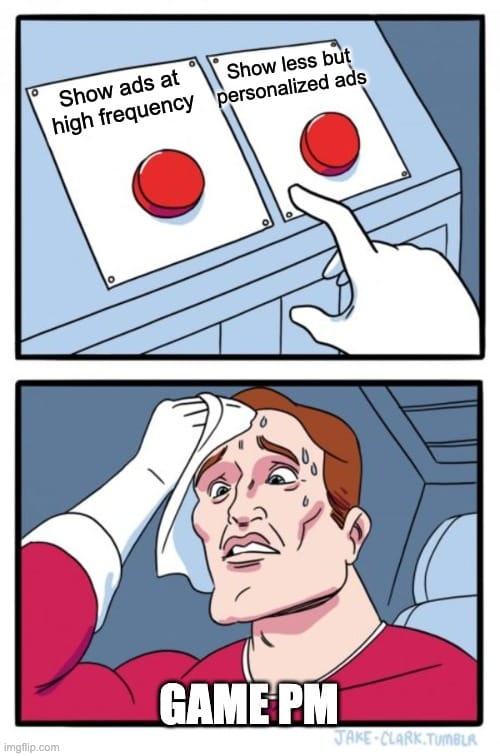Implementing Effective Ad Strategies in Mobile Games Without Hurting User Experience

Introduction to Ad Strategies in Mobile Games
As developers strive to monetize their games effectively, implementing ad strategies has become a crucial aspect of their revenue model. Implementing effective ad strategies can significantly boost revenue, but balancing ad revenue with user experience is essential. Poorly implemented ads can drive players away, while well-integrated ads can enhance the gaming experience. This blog will explore how to implement ads effectively without compromising user experience.
Impact of Ads on Mobile Game User Experience
Advertisements, when implemented poorly, can disrupt the player experience in mobile games. Frequent and intrusive ad placements lead to frustration, diminish player engagement, and cause users to abandon the game altogether. It is crucial to acknowledge the potential pitfalls and negative impacts of poorly executed ad strategies:
Disrupting Gameplay: Ads that appear during critical moments of gameplay, such as mid-level or during intense action sequences, can be jarring and break the player's immersion.
Excessive Frequency: An overwhelming number of ad impressions can quickly become a source of annoyance, leading to a negative perception of the game and potential uninstallation.
Irrelevant Ads: Displaying ads that are unrelated to the game's theme or the player's interests can be perceived as intrusive and detract from the overall experience.
Technical Issues: Poorly implemented ads can cause performance issues, such as lag or crashes, further exacerbating the negative user experience.
To mitigate these pitfalls, developers must adopt a strategic approach, carefully balancing ad revenue generation with maintaining a positive and engaging user experience.
Different Types of Ads in Mobile Games
While we’ve covered the different types of in-game ads, here’s a brief breakdown of the various ad formats used in mobile games, each with its own pros and cons:
Banner Ads: Simple and non-intrusive but often ignored by players.
Interstitial Ads: Full-screen ads that appear at natural pauses but can be disruptive if overused.
Rewarded Videos: Players watch ads in exchange for in-game rewards, which can enhance the experience.
Native Ads: Ads that blend seamlessly with game content, maintaining immersion.
Understanding the advantages and disadvantages of each format helps in choosing the right type of ads for your game.
Best Practices for Ad Implementation in Mobile Games

Implementing ads thoughtfully and strategically is important for preserving a positive user experience while maximizing revenue potential. Here are some best practices to consider:
1. Ad Placement
Strategically placing ads in areas that do not interfere with gameplay is essential. For instance, banner ads can be positioned at the top or bottom of the screen, ensuring they do not obstruct critical game elements. Interstitial ads, on the other hand, can be displayed during natural breaks in gameplay, such as level transitions or game pauses.
2. Ad Frequency
Striking the right balance with ad frequency is vital. While too few ads may result in missed revenue opportunities, an excessive number of ads can lead to user fatigue and potential abandonment. Conduct thorough testing and gather user feedback to determine the optimal ad frequency for your game.
3. Ad Relevance
Displaying relevant ads tailored to the player's interests and preferences can significantly enhance the user experience. Leverage user data and contextual information to serve ads that align with the game's theme or the player's demographic and behavioral patterns.
4. Rewarded Ads
Rewarded video ads, which offer players in-game rewards or bonuses for watching an ad, can be a powerful tool for increasing ad engagement and revenue. However, ensuring that the rewards are meaningful and the ad experience is seamless and non-disruptive is crucial.
5. Native Ads
Native ads, which blend seamlessly into the game's environment, can provide a more organic advertising experience. These ads mimic the game's visual style and can be integrated into the gameplay mechanics, offering a less intrusive and potentially more engaging experience for players.
6. User Feedback and Iteration
Continuously gathering and analyzing user feedback is essential for refining your ad strategy. Monitor metrics such as retention rates, session lengths, and in-app purchases to gauge the impact of your ad implementation. Be prepared to iterate and adjust your approach based on user feedback and performance data.
Balancing Personalized Ads and Data Privacy
Personalized ads tailored to individual player preferences and behaviors can enhance engagement and revenue potential. However, one must strike a balance between personalization and data privacy, to ensure that user data is collected and utilized ethically and transparently.
1. Benefits of Personalized Ads
Personalized ads can offer a more relevant and engaging experience for players, increasing the likelihood of ad interaction and conversion. By leveraging user data, such as gameplay patterns, in-app purchases, and demographic information, developers can serve ads that resonate with individual players' interests and preferences.
2. Data Privacy Considerations
While personalized ads offer numerous benefits, it is essential to prioritize data privacy and adhere to relevant regulations and industry best practices. Transparent communication about data collection practices, obtaining user consent, and implementing robust data security measures are crucial for building trust and maintaining a positive user experience.
3. Ethical Data Collection
Implementing ethical data collection practices is paramount. Clearly communicate the types of data being collected, the purpose of collection, and provide users with control over their data preferences. Adhere to industry standards and regulations, such as the General Data Protection Regulation (GDPR) and the California Consumer Privacy Act (CCPA), to ensure compliance and maintain user trust.
4. Transparent Data Practices
Transparency is key when it comes to data practices. Provide users with clear and easily accessible information about how their data is being collected, used, and shared. Offer opt-out options and ensure that user preferences are respected throughout the data collection and ad personalization process.
Measuring the Success of Your Ad Strategies
Analyzing ad performance and gathering user feedback are critical components of optimizing your ad strategies. By leveraging data-driven insights and user-centric feedback, developers can refine their approach and ensure long-term success in monetization while maintaining a positive user experience.
1. Analyzing Ad Performance
Monitoring key metrics such as ad impressions, click-through rates (CTRs), and effective cost per mille (eCPM) can provide valuable insights into the effectiveness of your ad strategies. Additionally, tracking metrics like user retention, session lengths, and in-app purchases can help gauge the impact of ads on the overall user experience.
2. Gathering User Feedback
Soliciting direct feedback from players through in-app surveys, feedback forms, or social media channels provides invaluable insights into their perceptions of the ad experience. This feedback can help identify areas for improvement, such as ad frequency, placement, or relevance.
3. Optimizing Ad Strategies
Armed with data-driven insights and user feedback, game studios must optimize their ad strategies by iterating on ad placements, formats, and targeting. Continuous refinement and adaptation are important to ensure that ad strategies remain effective and aligned with evolving user preferences and industry trends.
4. A/B Testing
Conduct A/B tests to get valuable insights into the impact of different ad strategies on user engagement and revenue. By comparing the performance of different ad placements, formats, or frequencies, developers can make data-driven decisions and identify the most effective approach for their specific game and audience.
Successful Ad Strategies in Mobile Games
To illustrate the potential of successful ad strategies in mobile games, let's explore a few 2 scenarios of effective implementation of ad strategies in mobile games:
Case 1: Casual Puzzle Game
Casual puzzle games can implement a strategic ad strategy that leverages rewarded video ads and carefully placed interstitial ads. The rewarded video ads seamlessly integrate into the gameplay, offering players the opportunity to earn extra lives or power-ups in exchange for watching an ad. Additionally, interstitial ads can be strategically placed during natural breaks, such as level transitions or menu screens, minimizing disruption to the gameplay experience.
The game can expect an increase in ad revenue while maintaining high user retention rates and positive player feedback. The non-intrusive ad experience and the ability to earn rewards, contribute to a positive perception of the game.
Case 2: Mid-Core Strategy Game
A mid-core strategy game can implement a personalized ad strategy that leverages user data and contextual cues. By analyzing player behavior, preferences, and in-game progress, the game can serve targeted ads that align with the player's interests and the game's theme.
Additionally, they can utilize native ads that blend seamlessly into the game's environment, to create an organic and immersive advertising experience. Players will appreciate the relevance of the ads, which complement the game's narrative and visual style.
The game can expect an increase in ad engagement and revenue while maintaining high levels of user satisfaction and retention. The seamless integration of ads offers an overall cohesive experience.
Conclusion: Balancing Ad Revenue and User Experience
Balancing ad revenue with maintaining a positive user experience is crucial for the long-term success of mobile games. By following best practices for ad implementation, integrating ads seamlessly, and respecting data privacy, developers can optimize their ad strategies without compromising player satisfaction. Continuous analysis and feedback are key to refining these strategies over time.
Remember, the key to success lies in adopting a strategic and data-driven approach, leveraging best practices such as strategic ad placement, optimized ad frequency, and personalized ad relevance.
Optimize Your Ad Strategies with Segwise.ai
Are you ready to take your mobile game ad strategies to the next level? Segwise’s AI agents enable you to grow your game’s LTV. The agents root cause game metrics, identify causal metric drivers, and enable game studios to act on LTV growth opportunities faster. With Segwise's advanced player hypersegmentation capabilities, you can personalize and optimize ads to drive lifetime value (LTV) like never before. Segwise tells you exactly why your game metrics are moving, and saves you hours of querying on dashboards and SQL!

Comments
Your comment has been submitted successfully!